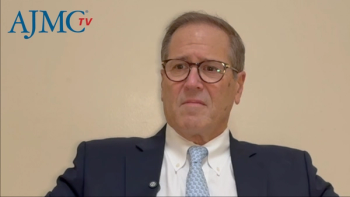
Population Health, Equity & Outcomes
- September 2025
- Volume 31
- Issue Spec. No. 10
- Pages: SP740-SP742
Addressing Racial Disparities in Minority Mental Health and Finding Support in 2025
Key Takeaways
- Racial and ethnic minorities face significant disparities in mental health service utilization and quality of care, often due to cultural misunderstandings and lack of access to appropriate providers.
- Racial discrimination is linked to worse mental health outcomes, including increased probabilities of depression and substance use disorders, with geographic and insurance factors moderating these effects.
National Minority Mental Health Month emphasizes the persistent mental health disparities among US racial and ethnic minorities, stemming from lower access to services, lack of culturally competent providers, discrimination, and medical mistrust, underscoring the need for dedicated resources and community action.
Am J Manag Care. 2025;31(Spec. No. 10):SP740-SP742.
National Minority Mental Health Awareness Month, which is observed each July, brings greater understanding to the unique challenges that racial and ethnic minority groups in the US experience when it comes to mental
Understanding Mental Health Disparities in Minority Populations
White adults (50%) report using mental health services more often than Black (39%) and Hispanic (36%) adults.3 Asian (55%) and Black (46%) adult populations reported more difficulty than their White counterparts (38%) finding a provider who understood their background and experiences. Hispanic adults had the highest proportion reporting they did not receive mental health care, primarily because they did not know how to find a provider (24%) or they were afraid or embarrassed to seek care (30%). Notably, individuals of a racial and ethnic minority group who receive mental health care are more likely to encounter poor quality care, based on the US Surgeon General’s landmark
report on mental health.4
Lack of access to health insurance significantly affects mental health treatment access, especially for non-White individuals, who are more likely to be uninsured.5 The relationship between racial discrimination and worse health outcomes supports the theory that racial discrimination can cause poorer health.6 Racial discrimination has been linked to physiological responses such as dysregulated cortisol secretion, higher C-reactive protein levels, higher systolic and diastolic blood pressure, and augmented heart rate variability.6
Researchers found multiple pieces of evidence linking racial discrimination with worse mental health across various study methods, social contexts, and racial/ethnic groups.6 For example, participants who experienced racial discrimination had a 3% higher probability of having a depressive disorder (95% CI, 0.01-0.04) compared with participants who did not. Geographic region (95% CI, 0.01-0.08) and access to health insurance (95% CI, −0.08 to −0.02) moderated the link between racial discrimination and the probability of a depressive disorder. Notably, participants who experienced racial discrimination had a 2% higher probability of experiencing a substance use disorder (95% CI, 0.01-0.02) compared with participants who did not experience racial discrimination.
Further mental health disparities persist because racial and ethnic minority populations are often underdiagnosed or misdiagnosed, fostering medical mistrust. Historically, Black adults remain less likely to seek care, with the COVID-19 pandemic widening racial disparities in treatment utilization.7 Specifically, Black adults are more likely to be hesitant when seeking professional help for mental health problems. This hesitancy stems mainly from concerns surrounding racial discrimination in health care settings.
Medical mistrust is the general suspicion or belief that an institution or individual provider will not meet agreed-upon expectations to provide optimal care for the patient. It likely drives the lower rate of participation among Black individuals in research. Due to the historical abuse of Black populations in these settings, the potential fear of being exploited or treated as “guinea pigs” rather than respected research participants is a considerable factor.2
Supporting Diverse Communities With Proper Resources
National Minority Mental Health Awareness Month has been observed every July since 2008 to honor Bebe Moore Campbell, an author and advocate for mental health for Black, indigenous, and people of color communities.8 Various mental health resources exist for marginalized communities, directed toward Jewish, Muslim, Black, Hispanic/Latinx, Asian/Hawaiian/Pacific Islander, and indigenous populations.9
Jewish Family Service supports the Jewish community by focusing on food security, housing stability, mental health counseling, aging care, employment support, refugee resettlement, and more.10 The nonprofit organization serves all faiths, races, ages, ethnicities, incomes, abilities, gender identities, and sexual orientations.Naseeha Mental Health’s Muslim helpline offers online therapy programs and educational initiatives and helps individuals navigate life challenges.11 Naseeha’s website includes resources regarding income-based assistance. The confidential helpline provides support over the phone 24/7.9Black Emotional and Mental Health Collective (BEAM) operates as a collective of an international network of therapists, wellness practitioners, healing justice efforts, and grassroots wellness initiatives to transform and support the well-being and mental health of marginalized communities.12 BEAM funds, organizes, and sponsors healing justice efforts while creating spaces for collective healing and crisis response.National Latino Behavioral Health Association was developed to unify Latino populations and bring awareness to the disparities in access, utilization, practice-based research, and adequately trained personnel.13 The association focuses on achieving behavioral health equity and provides new programs to respond to the diverse needs of the community in a culturally and linguistically appropriate way.Asian & Pacific Islander American Health Forum provides policy and political analysis, research, data support, and effective communications strategies to support Asian Americans, Native Hawaiians, and Pacific Islanders working to further influence local, state, and national policies.14 The forum provides grants, training, technical assistance, and consulting so communities can mobilize and strengthen their coalitions and organizational structures.American Indian and Alaska Native National Suicide Prevention Strategic Plan offers interconnected programming on health, education, law enforcement, public health, well-being, economic development, and physical and behavioral health to maximize the effectiveness of services and to protect individuals against suicide risk.15 The national initiative addresses suicide prevention across a collaboration of tribes, tribal organizations, Urban Indian organizations, and the Indian Health Service.9
In addition to these resources, generalized crisis and mental health condition resources exist, as do more detailed resources for various minority communities who may also have disabilities or are part of the LGBTQ+ community.
The 2025 theme for National Minority Mental Health Awareness Month was “Turning Awareness Into Action,” with a focus on taking care of oneself and the community.16 Common suggestions for taking care of oneself include learning about minority health and engaging in spiritual or reflective practices. Ways to take care of the community include education, especially on mental health and advocacy, and continuing to share resources about the specific needs of minority groups. Community care can also involve sharing similar stories if there is a direct personal experience with mental illness and treatment. Being an ally and supporting someone in a crisis, as well as actively showing up for them in support groups, peer support groups, or public initiatives, can also promote minority mental health awareness.
References
- National Minority Mental Health Awareness Month. FDA. Updated July 8, 2024. Accessed July 15, 2025.
https://www.fda.gov/consumers/knowledge-and-news-women-owh-blog/national-minority-mental-health-awareness-month - Santoro C. American advocacy and action for minority health in 2025. AJMC®. April 4, 2025. Accessed July 15, 2025.
https://www.ajmc.com/view/advocacy-and-action-for-minority-health-in-america - Panchal N, Hill L, Artiga S, Hamel L. Racial and ethnic disparities in mental health care: findings from the KFF survey of racism, discrimination and health. KFF. May 23, 2024. Accessed July 15, 2025.
https://www.kff.org/racial-equity-and-health-policy/issue-brief/racial-and-ethnic-disparities-in-mental-health-care-findings-from-the-kff-survey-of-racism-discrimination-and-health/ - Mental health inequities: racism and racial discrimination. National Alliance on Mental Illness. 2025. Accessed July 15, 2025.
https://www.nami.org/advocacy/policy-priorities/supporting-community-inclusion-and-non-discrimination/mental-health-inequities-racism-and-racial-discrimination/ - Ndugga N, Pillai D, Artiga S. Disparities in health and health care: 5 key questions and answers. KFF. August 14, 2024. Accessed July 15, 2025.
https://www.kff.org/racial-equity-and-health-policy/issue-brief/disparities-in-health-and-health-care-5-key-question-and-answers/ - Chen S, Mallory AB. The effect of racial discrimination on mental and physical health: a propensity score weighting approach. Soc Sci Med. 2021;285:114308. doi:10.1016/j.socscimed.2021.114308
- Pederson AB, McLaughlin C, Hawkins D, et al. Medical mistrust and willingness to use mental health services among a cohort of black adults. Psychiatr Serv. 2025;76(4):318-325. doi:10.1176/appi.ps.20240016
- Bebe Moore Campbell National Minority Mental Health Awareness Month. National Alliance on Mental Illness. 2025. Accessed July 16, 2025.
https://www.nami.org/get-involved/awareness-events/bebe-moore-campbell-national-minority-mental-health-awareness-month/ - Mental health resources for marginalized communities. American Foundation for Suicide Prevention. Accessed July 16, 2025.
https://afsp.org/mental-health-resources-for-marginalized-communities/ - Services. Jewish Family Service. 2025. Accessed July 16, 2025.
https://www.jewishfamilyservice.org/services - Naseeha Mental Health. 2022. Accessed July 16, 2025.
https://www.naseehausa.org/ - Our work. Black Emotional and Mental Health Collective. Accessed July 16, 2025.
https://beam.community/ - About us. National Latino Behavioral Health Association. Accessed July 16, 2025.
https://nlbha.org/about-us/about-us/ - About. Asian & Pacific Islander American Health Forum. 2025. Accessed July 16, 2025.
https://www.apiahf.org/about - Suicide prevention and care program. Indian Health Service. Accessed July 16, 2025.
https://www.ihs.gov/suicideprevention/ - Whyte A. Minority Mental Health Awareness Month 2025. Bay Area Clinical Associates. July 1, 2025. Accessed July 16, 2025.
https://baca.org/blog/minority-mental-health-awareness-month-2025/
Articles in this issue
Newsletter
Stay ahead of policy, cost, and value—subscribe to AJMC for expert insights at the intersection of clinical care and health economics.








































